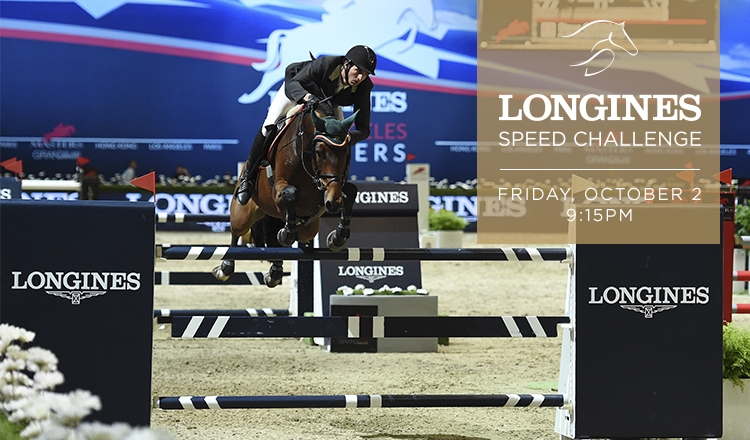Longines Speed Challenge features a Luc Musette course - Exclusive Interview
星期二 08 九月 2015 Los Angeles
星期二 08 九月 2015 Los Angeles
The Longines Masters features the only speed class of its kind in the world. Featuring prize money of $130,000, the Longines Speed Challenge class hinges on emotion and suspense, making it a perennial crowd favorite on three different continents.
Created in Paris in 2010 by EEM World, the speed class requires perfect timing and decisive precision, the same two values on which Longines—a passionate supporter of equestrian sports—has built its luxury brand. While there are other speed classes in show jumping, the Longines Speed Challenge differs slightly from the traditional format by faulting a knocked rail with a two-second penalty, instead of the usual four. With this change, riders can strategize rounds that could possibly still win even with a rail down, and the high-flying class gives new meaning to “the fast and the furious.”
Debuting at the Los Angeles event is a much-anticipated Longines Speed Challenge course from Luc Musette, an acclaimed course designer from Belgium. The 1.45-meter track will then remain unchanged at the Paris and Hong Kong events, inspiring riders to improve their times and accuracies from one continent to another. A rider may decide to skip an interesting, time-saving option at one event, only to take it at another in a thrilling effort to score a faster round.
“I have designed a speed course in which horses can express all their potential and riders will have to draw a fluid path,” Musette said. “The health of the horse always remains a central concern,” he added when describing his design process for the new course.
But that’s the extent that Musette will reveal about his design, only commenting that he hopes the riders will be pleasantly surprised by the speed track. “I have two, three ideas for possible options, but this is a surprise,” he said.
Agile and energetic horses will best suit Musette’s speed course, although he’s quick to specify that there isn’t just one type that can claim a top score and time. A large horse with a ground-covering stride can do just as well as a quick-moving horse on the smaller side.
“One of the important things is that the rider must not ‘protect’ the obstacles on horseback,” Musette advised. “It is very important to have a friendly horse that’s not afraid to jump obstacles at a fast pace.”
Constantly striving to discover new elements to add to his courses, Musette approached the Longines Masters of Los Angeles like he does with every other show on his schedule: with passion and ingenuity.
“I like to think that I have my own style,” Musette said. “So, I do not generally look at previous course designs, but I believe it is essential for us to take into account the riders that will be taking part at the event and, just as importantly, the horses that they are bringing with them. When we have the riders' top horses (at the Longines Masters of Los Angeles), it is another sport to when we have the less experienced horses.”
“Our work is getting harder because in the last few years the quality of horses has greatly improved,” he added. “We, as course designers, must stay reasonable in what we offer.”
To Musette, a successful course is one that has small faults spread around the course and with a sufficient number of horses in the jump off. He also puts much care and thought into designing options that never places the horse in a difficult position.
“There are many possibilities in the upcoming Longines Speed Challenge, and it will be up to the riders to choose the most suitable solutions for their horses,” Musette said.





